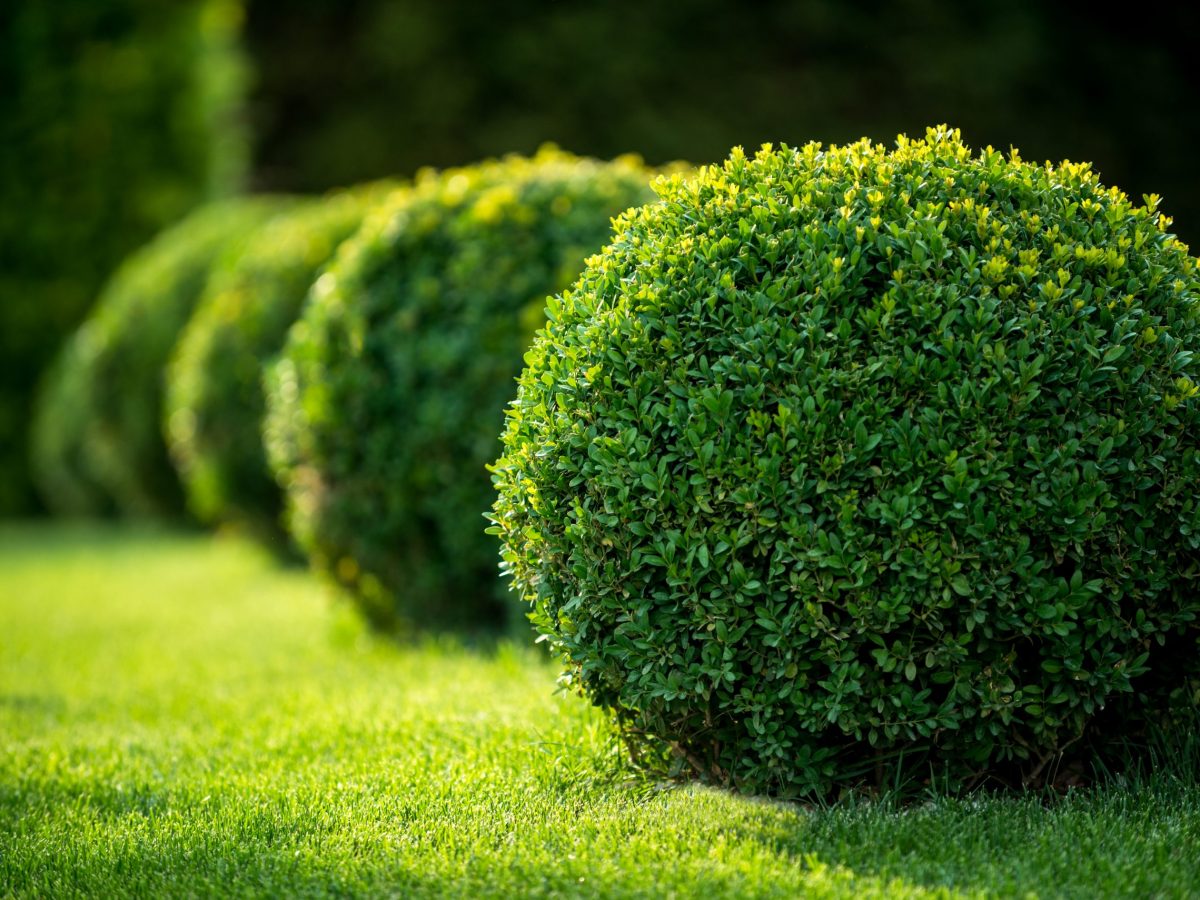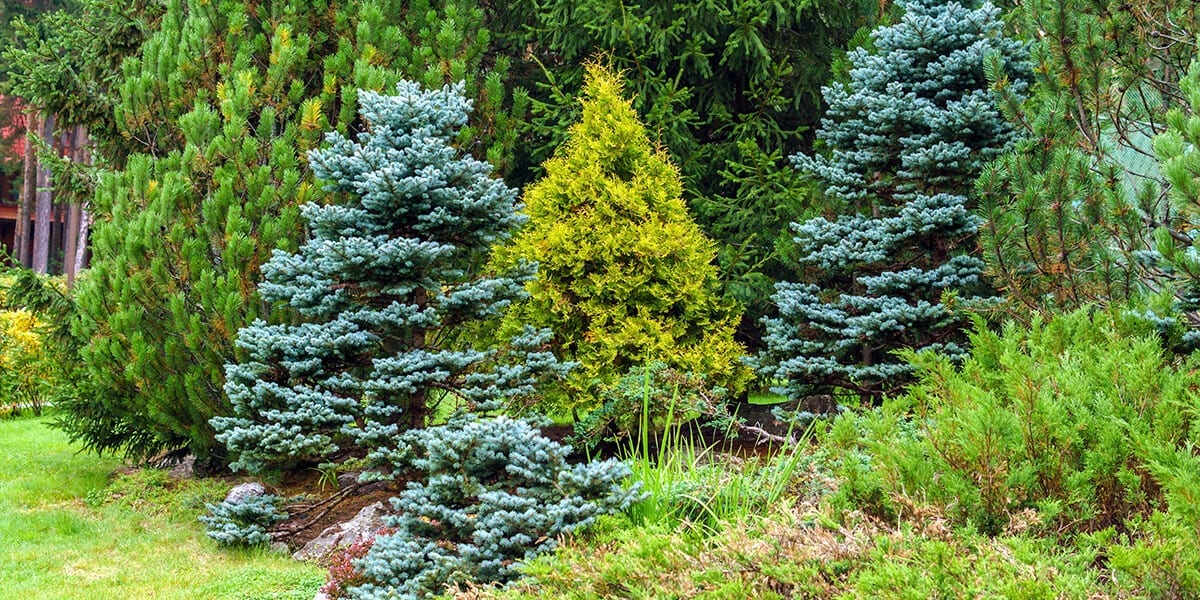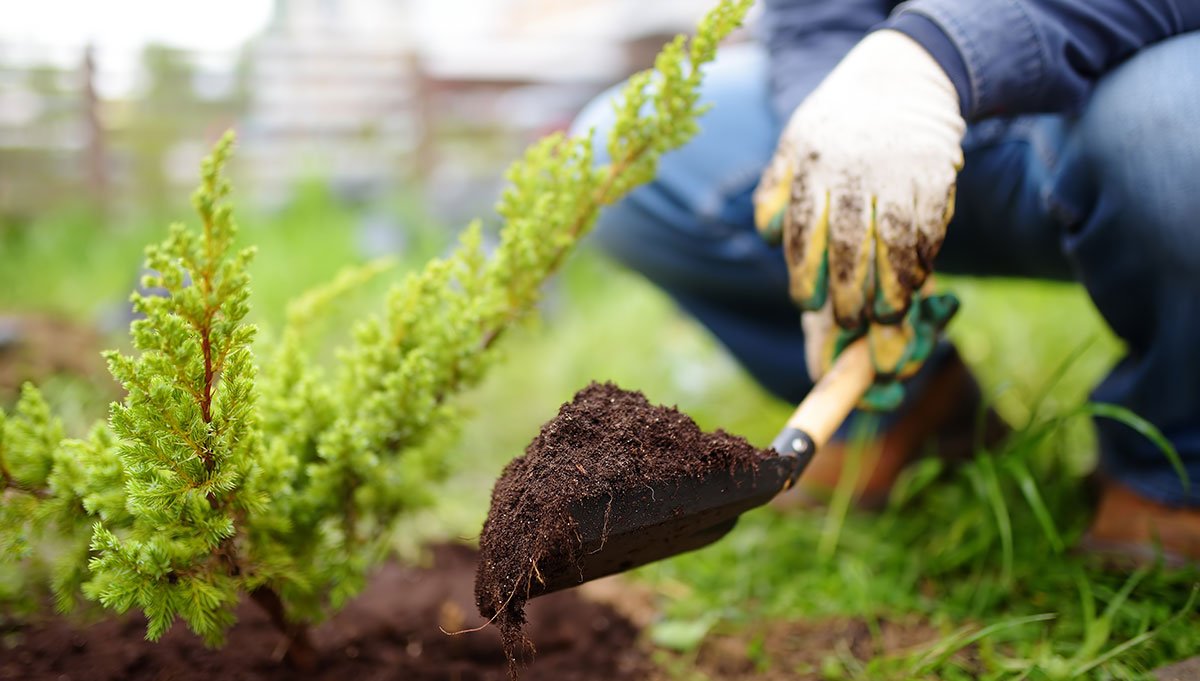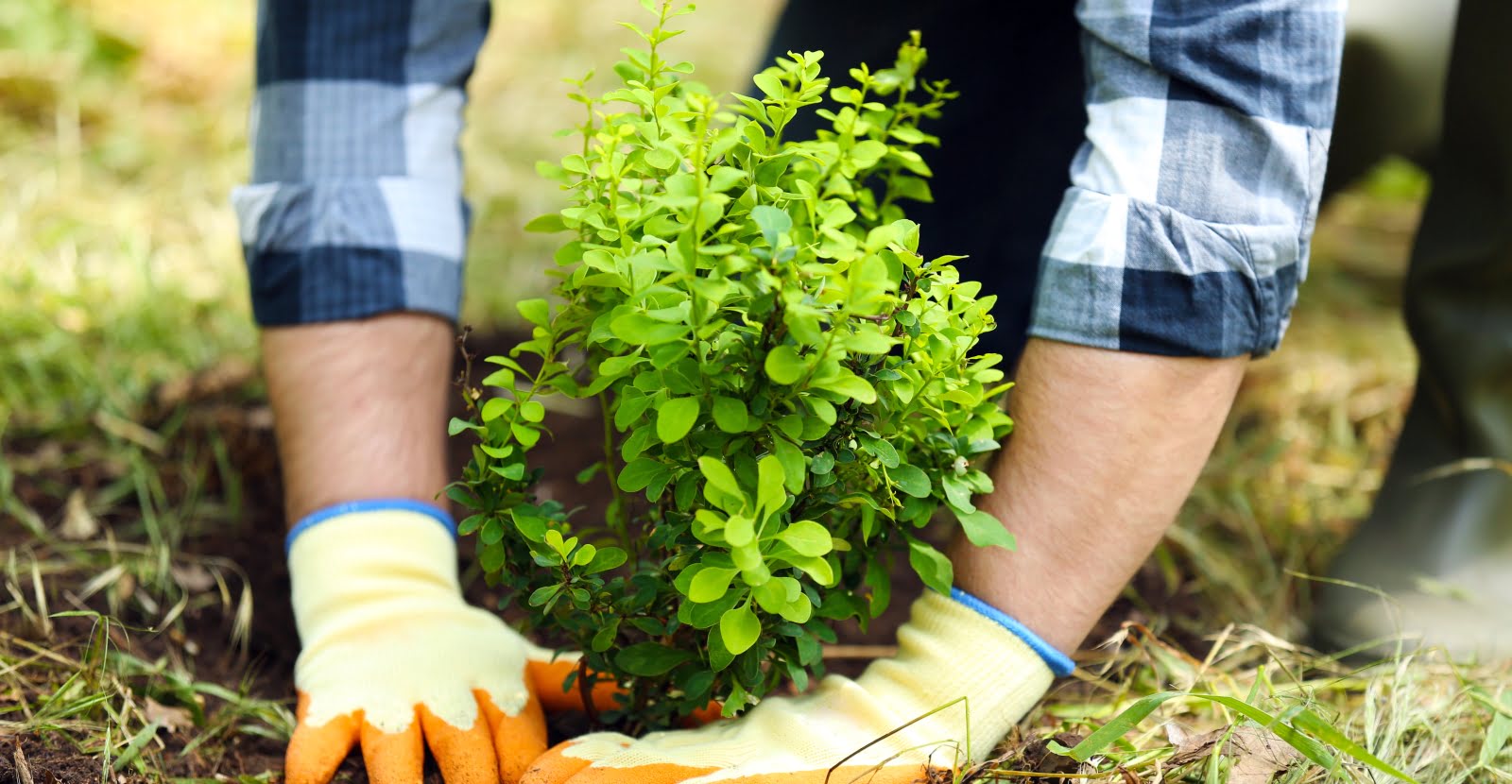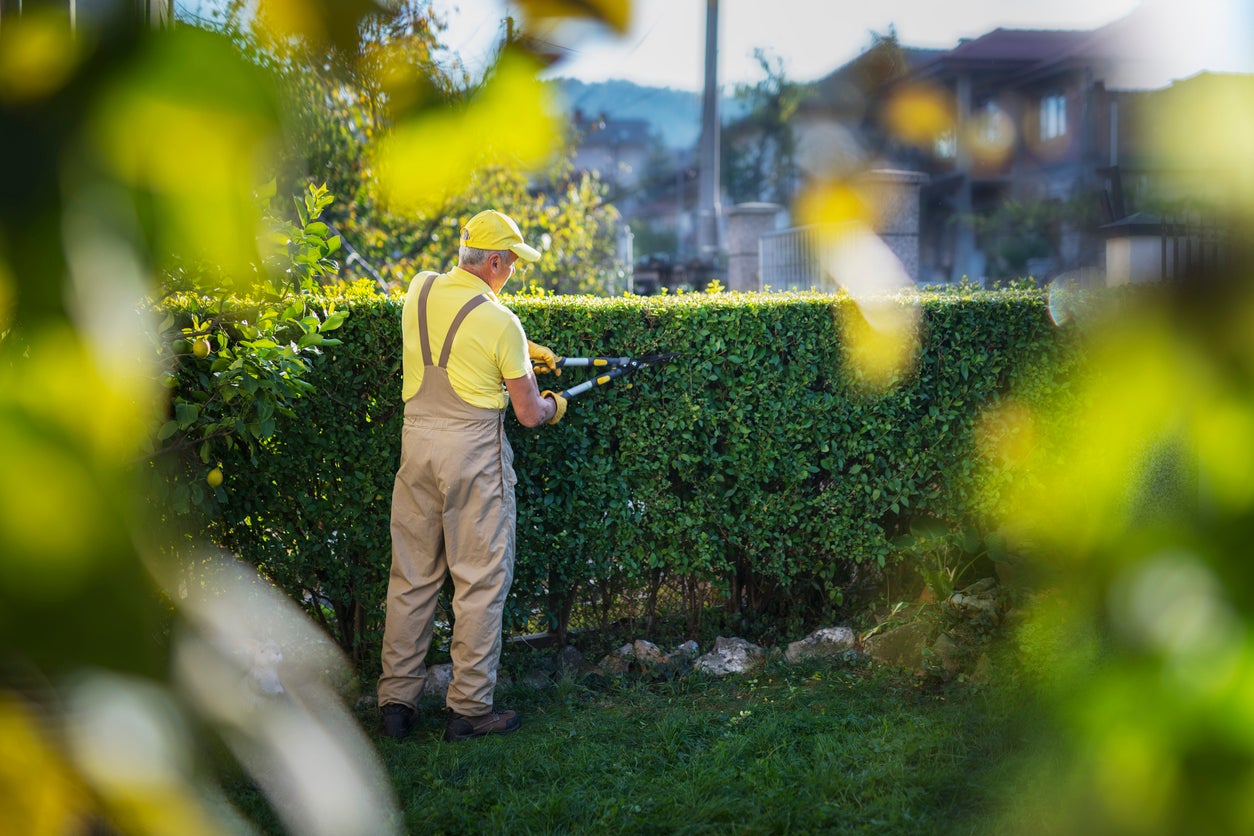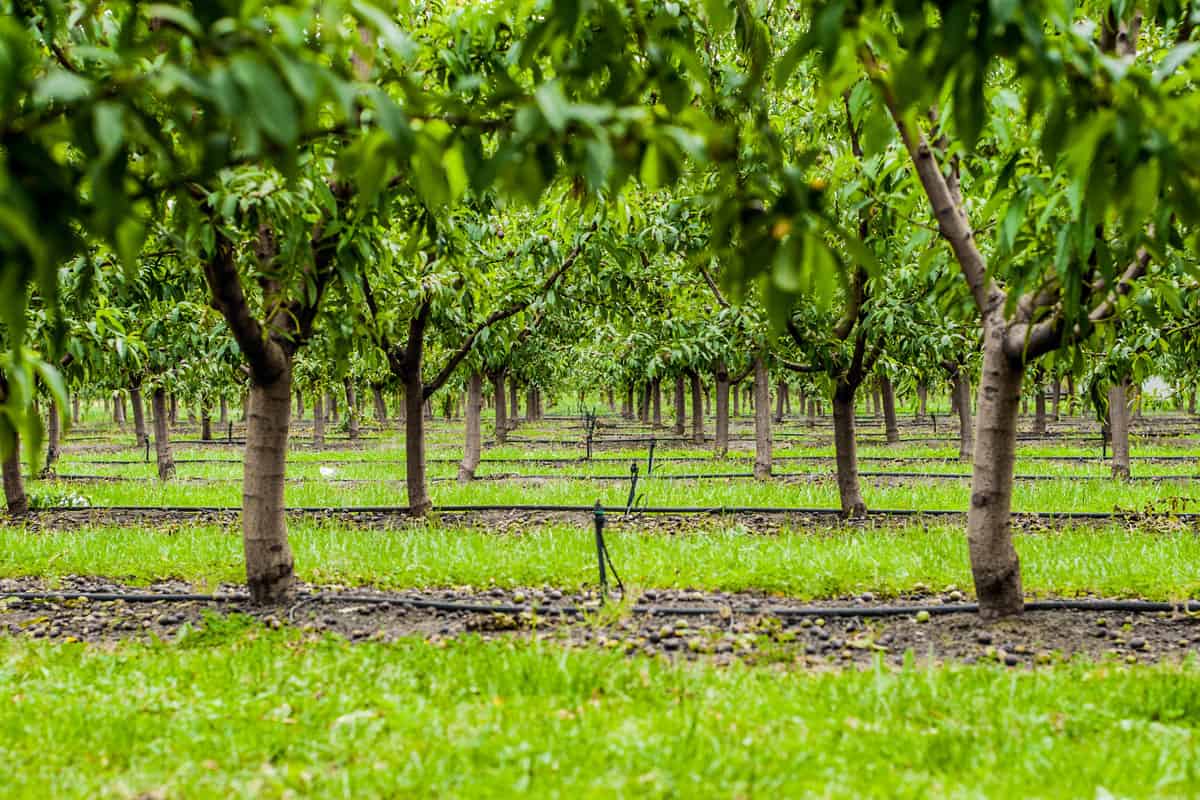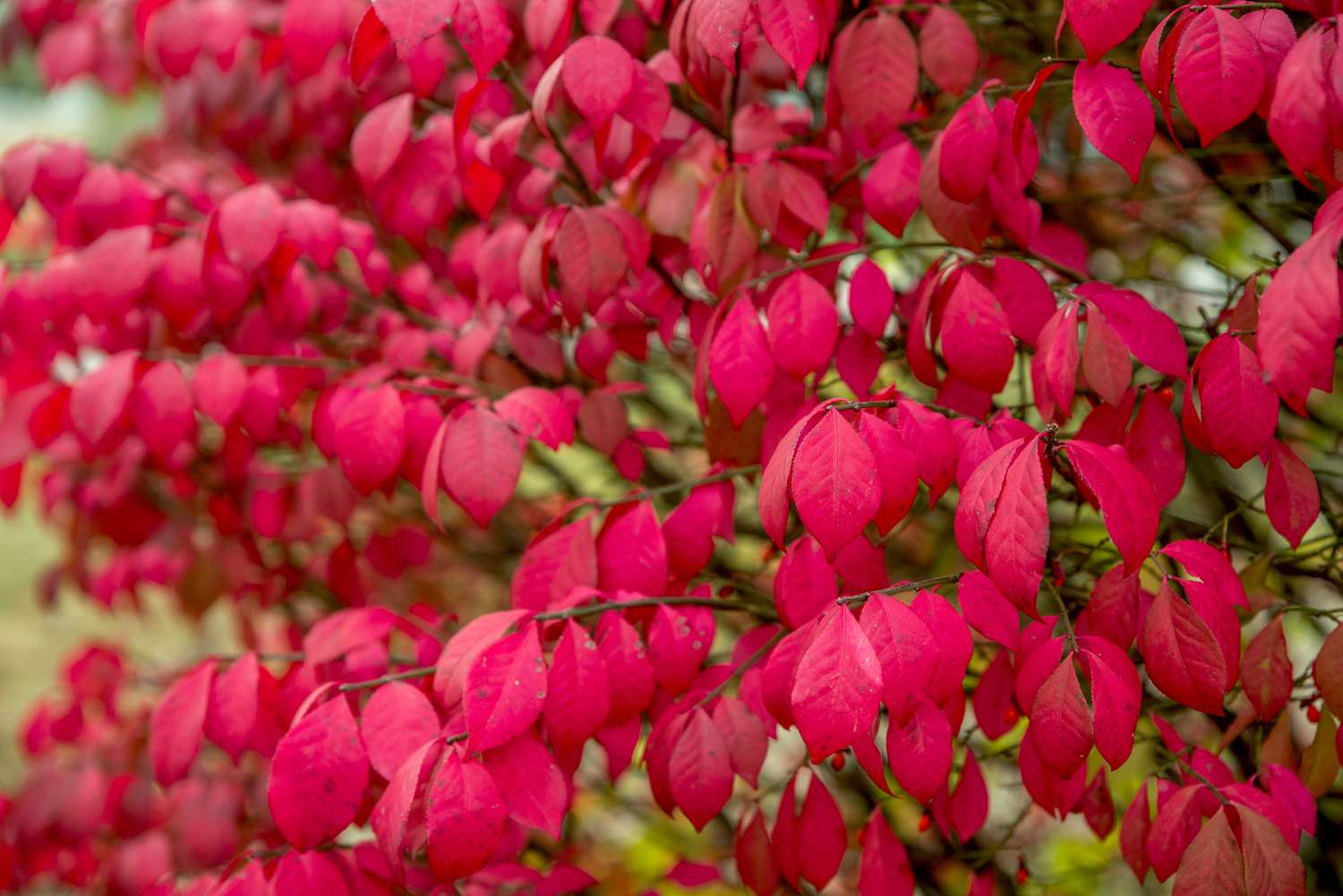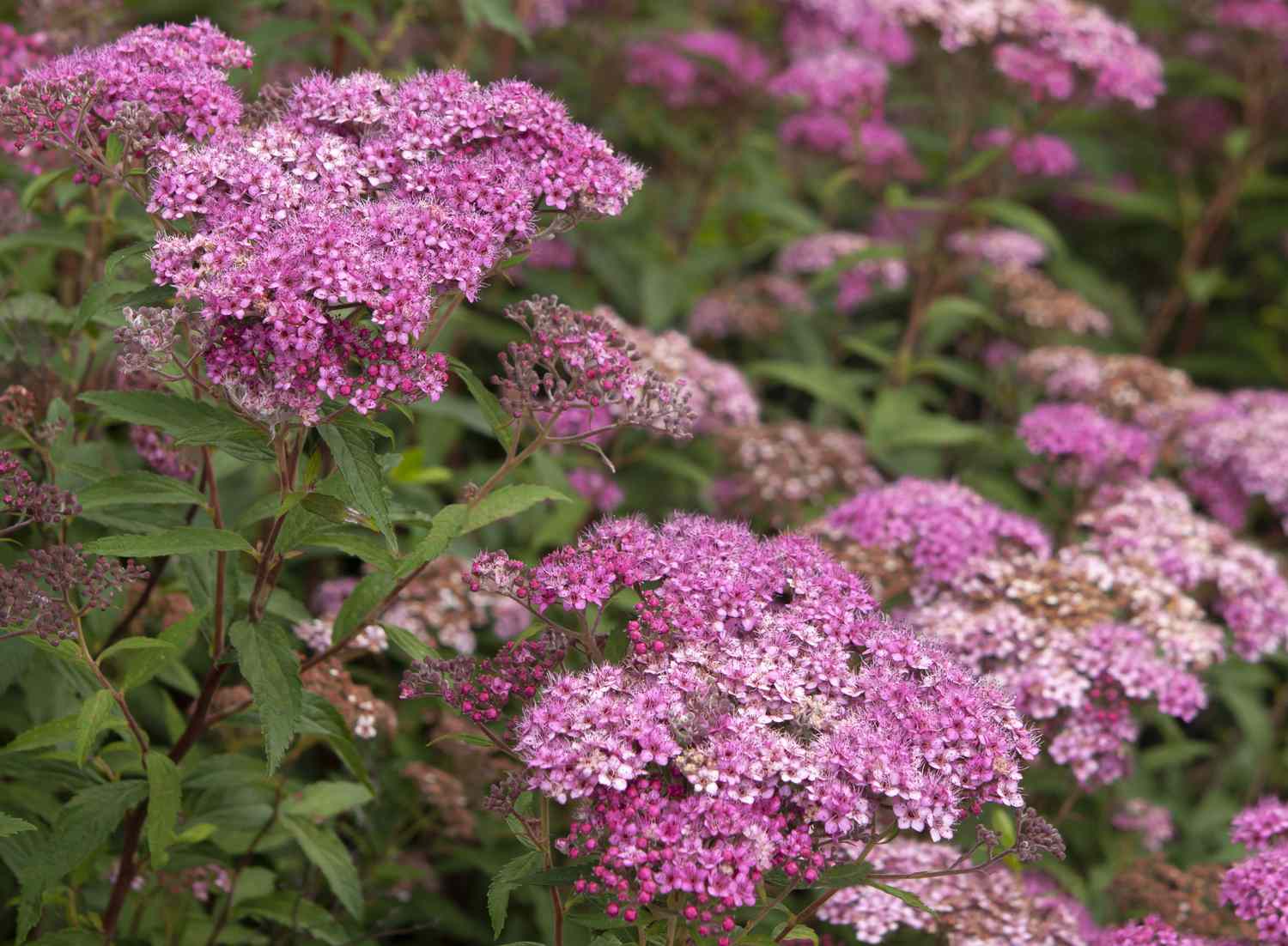Home>Gardening Techniques>Plant Care>When To Fertilize Shrubs
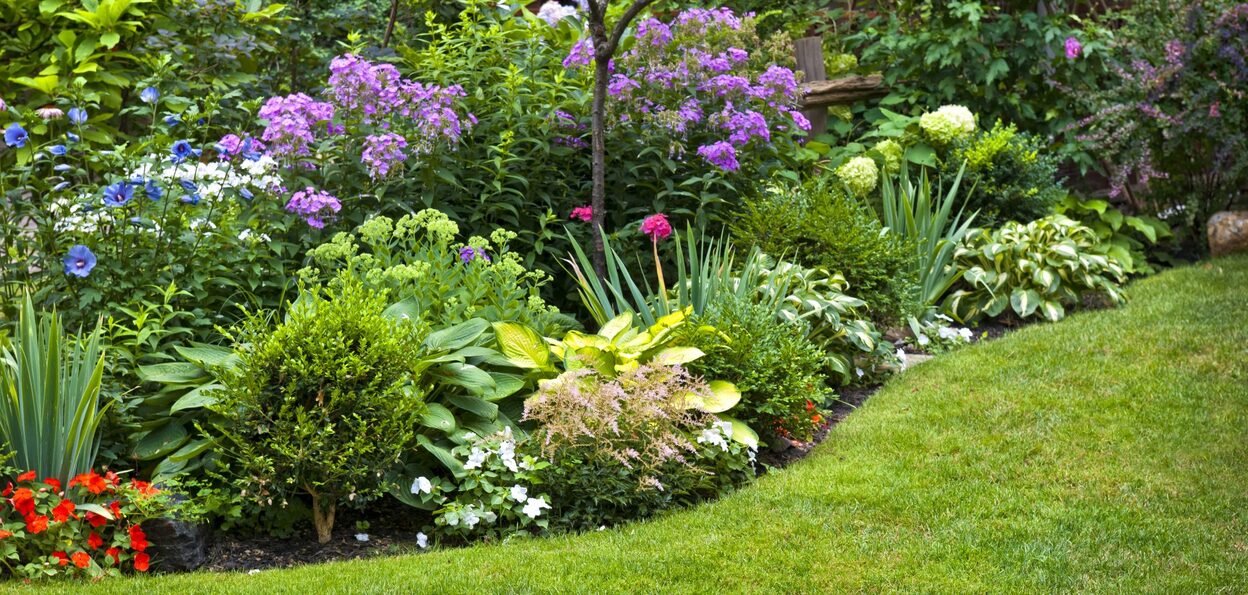

Plant Care
When To Fertilize Shrubs
Modified: January 22, 2024
Learn the best time to fertilize your shrubs and ensure healthy plant care.
(Many of the links in this article redirect to a specific reviewed product. Your purchase of these products through affiliate links helps to generate commission for Chicagolandgardening.com, at no extra cost. Learn more)
Table of Contents
Introduction
Welcome to the world of plant care! If you’re passionate about growing healthy and vibrant shrubs, then understanding the importance of fertilization is essential. Fertilizing your shrubs provides them with the necessary nutrients to thrive, ensuring they stay strong, disease-resistant, and visually appealing.
Shrubs are a versatile and popular addition to any garden or landscape. They can provide privacy, add beauty to your surroundings, and attract beneficial wildlife. However, like any living organism, shrubs need proper care and attention to reach their full potential.
Factors such as soil quality, climate, and the specific type of shrub can all influence the fertilization needs. By understanding these factors and knowing when to fertilize, you can provide optimal conditions for your shrubs to flourish.
In this article, we will explore the different factors to consider when determining the best time to fertilize your shrubs. We will also discuss the types of fertilizers available and provide guidance on when to fertilize during each season. Additionally, we will touch on the signs of nutrient deficiencies to help you identify and address any potential issues.
So, whether you’re a new plant enthusiast or a seasoned gardener looking to enhance your plant care knowledge, let’s dive into the world of shrub fertilization and discover how to nurture your beloved plants!
Factors to Consider
Before determining the best time to fertilize your shrubs, it’s important to consider a few key factors. These factors will help you understand the specific needs of your plants and tailor your fertilization schedule accordingly.
1. Shrub Type: Different shrubs have different nutritional requirements. Some shrubs prefer acidic soil, while others thrive in alkaline conditions. Research the specific needs of the shrubs in your garden to determine the appropriate fertilization regimen.
2. Soil Quality: The health and nutrient content of your soil play a vital role in determining when to fertilize. Conduct a soil test to assess its pH level and nutrient composition. This will guide you in selecting the right type and quantity of fertilizer.
3. Growth Stage: Shrubs go through different growth stages, including active growth, flowering, and dormancy. Time your fertilization to coincide with these stages. For example, provide extra nutrients during the active growth phase to support robust growth and flower development.
4. Climate: Climate plays a significant role in determining the timing of fertilization. Consider the climate in your region, particularly the length of the growing season and the onset of winter. Adjust your fertilization schedule accordingly to align with the specific needs of your shrubs.
5. Environmental Factors: Pay attention to environmental factors such as rainfall, temperature fluctuations, and sunlight exposure. These factors can affect the absorption and utilization of nutrients by your shrubs. Adjust your fertilization schedule accordingly to optimize nutrient uptake.
6. Previous Fertilization: Take into account the history of fertilization in your garden. If you have recently fertilized, wait for the appropriate interval before applying another round of fertilizer. Over-fertilization can lead to nutrient imbalances and harm your shrubs.
7. Fertilizer Type: Different types of fertilizers release nutrients at different rates. Slow-release fertilizers are designed to provide a gradual and consistent supply of nutrients over an extended period. Fast-release fertilizers, on the other hand, offer a quick boost of nutrients but may require more frequent applications. Consider the type of fertilizer you are using when determining the timing of fertilization.
By taking these factors into account, you can develop a customized fertilization plan that supports the individual needs of your shrubs. The next sections will explore the optimal timing for fertilization throughout the year, based on these considerations.
Types of Fertilizers
When it comes to fertilizing your shrubs, there are several types of fertilizers to choose from. Understanding the differences between these fertilizers will help you make an informed decision about which one is best suited for your shrubs’ needs.
1. Organic Fertilizers: Organic fertilizers are derived from natural materials such as compost, manure, bone meal, and seaweed. They release nutrients slowly over time as they break down, providing a gradual and sustainable source of nourishment for your shrubs. Organic fertilizers enrich the soil and improve its structure, promoting long-term soil health.
2. Synthetic Fertilizers: Synthetic or chemical fertilizers are manufactured products that contain specific ratios of essential plant nutrients. These fertilizers provide a quick nutrient boost to your shrubs and are typically available in granular or liquid form. Synthetic fertilizers are highly concentrated and provide precise control over nutrient content. However, they can also lead to nutrient imbalances if not used properly.
3. Slow-Release Fertilizers: Slow-release fertilizers are designed to release nutrients gradually over an extended period, usually several months. They come in various formulations, such as coated granules or pellets. Slow-release fertilizers provide a consistent supply of nutrients to your shrubs, reducing the risk of nutrient leaching and ensuring long-lasting results.
4. Water-Soluble Fertilizers: Water-soluble fertilizers are concentrated powders or liquid formulations that dissolve easily in water. They are quickly absorbed by the plant’s roots, providing immediate nutrition. Water-soluble fertilizers are often used for foliar feeding, where the fertilizer solution is sprayed directly onto the leaves. This method allows for fast nutrient absorption and can be beneficial in addressing nutrient deficiencies.
5. Balanced Fertilizers: Balanced fertilizers contain relatively equal amounts of nitrogen (N), phosphorus (P), and potassium (K), known as NPK. These three macronutrients are essential for plant growth and development. Balanced fertilizers are suitable for general-purpose use and can be applied to a wide range of shrubs.
6. Specialty Fertilizers: Specialty fertilizers are formulated to meet the specific needs of certain plants or soil conditions. For example, there are acid-loving fertilizers for shrubs that prefer acidic soil, or high-phosphorus fertilizers for promoting flower development. Specialty fertilizers can be beneficial if you have particular shrubs with unique nutritional requirements.
When selecting a fertilizer, consider the nutritional needs of your shrubs, the soil composition, and your personal preferences regarding organic or synthetic options. Remember to follow the manufacturer’s instructions for application rates and timings to ensure optimal results.
Spring Fertilization
Spring is a critical time to provide your shrubs with the necessary nutrients they need to kickstart the growing season. As temperatures rise and plants come out of dormancy, their nutrient requirements increase. Here are some considerations for spring fertilization:
1. Timing: The timing of spring fertilization will depend on your specific climate and the growth patterns of your shrubs. Generally, it’s best to wait until the soil has thawed and dried out enough to prevent compacting. Aim to fertilize early in the growing season, just before new growth starts to emerge.
2. Soil Preparation: Before applying fertilizer, make sure to remove any existing debris or weeds around the shrub. Loosen the soil to facilitate nutrient uptake. This can be done through light cultivation or by using a gardening fork to gently aerate the soil.
3. Nitrogen-Rich Fertilizers: In spring, shrubs require a boost of nitrogen to support their initial growth. Choose a fertilizer with a higher nitrogen (N) content to stimulate lush foliage development. However, be cautious not to overapply nitrogen, as excessive amounts can lead to excessive leaf growth at the expense of flower and fruit production.
4. Slow-Release Fertilizers: Utilizing slow-release fertilizers in the spring can provide a sustained supply of nutrients as the growing season progresses. These fertilizers release nutrients gradually, helping to avoid nutrient leaching and optimizing absorption by the shrubs.
5. Application Method: Follow the instructions on the fertilizer packaging for the correct application rate and method. In general, it is best to spread granular fertilizers evenly around the drip line of the shrub, keeping it at least a foot away from the trunk or stem. Alternatively, you can dissolve water-soluble fertilizers in water and apply them directly to the soil around the shrub.
6. Watering: After applying the fertilizer, water your shrubs thoroughly to enhance nutrient absorption and prevent fertilizer burn. Watering will help the nutrients penetrate the soil and reach the plant’s root zone.
7. Follow-Up Fertilization: Depending on the specific needs of your shrubs, you may need to follow up with additional fertilization during the growing season. Pay attention to how your plants are progressing and evaluate if they require a supplemental round of fertilizer based on their appearance and growth rate.
By providing the necessary nutrients in the spring, you can ensure that your shrubs have a strong foundation for the rest of the growing season. This early fertilization will support healthy growth, vibrant foliage, and potentially improved flower and fruit production.
Summer Fertilization
Summer is a period of active growth for shrubs, and proper fertilization during this time is essential to maintain their health and vigor. The following are some key points to consider for summer fertilization:
1. Timing: Summer fertilization should be timed appropriately to coincide with the peak growth period of your shrubs. Aim to fertilize early in the season before the hot summer heat intensifies, as excessive heat can cause stress to the plants.
2. Balanced Fertilizers: Choose a balanced fertilizer with equal ratios of nitrogen (N), phosphorus (P), and potassium (K). The balanced NPK formulation will provide essential nutrients that support overall plant health, root development, and flowering.
3. Slow-Release Fertilizers: Opt for slow-release fertilizers, particularly during the summer, as they provide a continuous supply of nutrients over an extended period. This helps prevent excessive nutrient leaching and ensures steady nourishment for your shrubs.
4. Watering: Adequate watering is crucial during the summer months, as high temperatures can lead to increased water loss through evaporation. Water your shrubs deeply before applying fertilizer, and then water again after fertilization to ensure proper nutrient uptake.
5. Nutrient Balance: While nitrogen is important for foliage growth, excessive nitrogen application can sometimes lead to weak stems and increased susceptibility to pests and diseases. Monitor your shrubs for signs of nutrient deficiencies or excesses and make adjustments as necessary.
6. Application Method: Apply the fertilizer evenly around the base of the shrub, extending to the drip line. Avoid direct contact with the foliage to prevent burning. If using a granular fertilizer, lightly rake it into the soil surface or water it in to facilitate nutrient absorption.
7. Supplemental Fertilization: Depending on the specific needs of your shrubs and their growth rate, you may need to provide supplemental fertilization during the summer. Pay attention to signs of nutrient deficiencies, such as yellowing leaves or stunted growth, and adjust your fertilization schedule accordingly.
Proper summer fertilization helps replenish the nutrients that your shrubs may have depleted during rapid growth. It promotes robust foliage, vibrant blooms, and overall plant vitality, enabling them to withstand the rigors of the summer season.
Fall Fertilization
Fall is a crucial time for fertilizing shrubs as it prepares them for the upcoming winter and sets the stage for healthy growth in the following spring. Here are some key considerations for fall fertilization:
1. Timing: Aim to fertilize your shrubs in late summer or early fall, several weeks before the first expected frost. This timing allows the shrubs to absorb and store essential nutrients before entering the dormant phase.
2. Phosphorus-Rich Fertilizers: Choose a fertilizer with a higher phosphorus (P) content. Phosphorus encourages strong root development and supports overall plant health. This nutrient is particularly important for shrubs during the colder months when root growth becomes more active.
3. Slow-Release Fertilizers: Opt for slow-release fertilizers in the fall to provide a steady supply of nutrients to the shrubs throughout the dormant period. Slow-release fertilizers ensure that the nutrients are available when the shrubs need them most, supporting root growth and preparing them for winter.
4. Application Method: Apply the fertilizer evenly around the base of the shrub, extending beyond the drip line. Gently work the granules or pellets into the soil surface, ensuring they are not in direct contact with the stems or foliage to prevent burning.
5. Watering: Water your shrubs thoroughly after applying the fertilizer. This helps to dissolve the nutrients, making them readily available for root absorption. Adequate hydration is crucial during the fall to ensure proper nutrient uptake and winter survival.
6. Mulching: Consider adding a layer of organic mulch around the base of your shrubs after fertilization. Mulch helps retain soil moisture, moderate temperature fluctuations, and gradually release nutrients into the soil as it decomposes.
7. Winter Protection: Fall fertilization prepares your shrubs for winter by strengthening their root systems and overall resilience. Well-nourished shrubs are better equipped to withstand harsh winter conditions, reducing the risk of winter damage and promoting healthy regrowth in the spring.
By providing the necessary nutrients in the fall, you’re setting the stage for a successful growing season the following year. Fall fertilization not only enhances the health and vitality of your shrubs but also ensures their ability to withstand the challenges of winter and thrive in the coming spring.
Signs of Nutrient Deficiencies
Recognizing the signs of nutrient deficiencies in your shrubs is crucial for maintaining their health and addressing potential issues. Here are some common signs to look out for:
1. Nitrogen Deficiency: Shrubs lacking nitrogen may exhibit slow or stunted growth, with pale or yellowing leaves. The older leaves may show signs of chlorosis, starting from the tips and progressing towards the center of the leaf.
2. Phosphorus Deficiency: Shrubs with phosphorus deficiency may have dark green leaves that appear dull or have a bluish-green tint. The leaves may also be smaller in size and have purple or reddish discoloration.
3. Potassium Deficiency: Shrubs lacking potassium may display wilted or drooping leaves, particularly during hot weather. The leaf margins can turn brown or develop necrotic spots, and overall, the plant may appear weak or stressed.
4. Iron Deficiency: Iron deficiency is commonly observed in shrubs growing in alkaline soils. The leaves may exhibit interveinal chlorosis, meaning the areas between leaf veins turn yellow while the veins remain green. In severe cases, the leaves can become completely yellow or white.
5. Magnesium Deficiency: Shrubs lacking magnesium may show yellowing or browning of the older leaves while the veins remain green. This condition is known as chlorosis and often starts at the leaf margins and progresses inward.
6. Calcium Deficiency: Calcium deficiency can manifest in shrubs with distorted or stunted growth. The young shoots may have abnormal growth patterns, and the leaves may appear weak, crinkled, or develop necrotic spots.
7. Micronutrient Deficiencies: Shrubs can also experience deficiencies in micronutrients like zinc, iron, manganese, or copper. These deficiencies may result in various symptoms, such as yellowing, leaf discoloration, stunted growth, or distorted leaves.
It’s important to note that nutrient deficiencies can have similar symptoms, making it challenging to diagnose the exact nutrient lacking in your shrubs. Conducting a soil test can provide valuable insights into the nutrient composition of your soil, helping you address deficiencies more accurately.
If you notice signs of nutrient deficiencies, it’s advisable to adjust your fertilization regimen accordingly. Applying a balanced fertilizer or a specific nutrient supplement can help rectify the deficiency and improve the overall health and appearance of your shrubs.
Regular monitoring of your shrubs’ appearance and promptly addressing any nutrient deficiencies will ensure their long-term vitality and resilience.
Conclusion
Caring for your shrubs through proper fertilization is essential for their health, growth, and overall beauty. By considering factors such as shrub type, soil quality, growth stage, climate, and environmental conditions, you can determine the optimal timing and type of fertilizer for your shrubs’ specific needs.
Understanding the different types of fertilizers available, including organic and synthetic options, slow-release and water-soluble formulations, and balanced or specialty fertilizers, allows you to make informed choices that best align with your gardening preferences and the requirements of your shrubs.
Spring fertilization provides a nutrient boost for new growth, while summer fertilization supports the shrubs’ active growth period. Fall fertilization prepares them for the upcoming winter by strengthening their roots and promoting winter survival. Monitoring for signs of nutrient deficiencies, such as yellowing leaves or stunted growth, allows you to address any issues promptly and adjust your fertilization regimen accordingly.
Remember to follow proper application techniques, water your shrubs adequately, and be mindful of over-fertilization, as it can lead to nutrient imbalances and harm the overall health of your shrubs.
With proper fertilization practices, your shrubs will flourish, exhibiting vibrant foliage, abundant blooms, and overall resilience. Regularly caring for and nourishing your shrubs will ensure that they remain a beautiful and vibrant addition to your garden or landscape for years to come.
